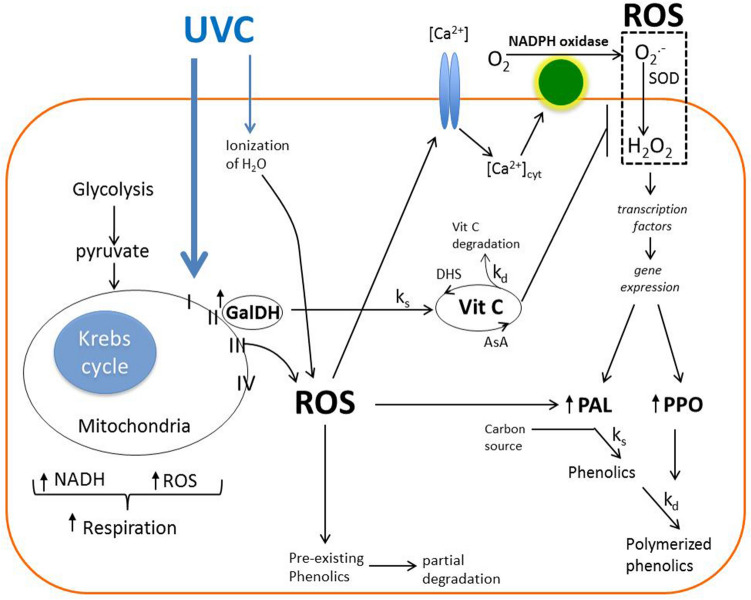Figure 7.
Mechanistic model of UVC stress signaling pathways in acerola. At the immediate UVC response, an initial burst of ROS occurs mediated mainly by a mitochondrial energy dissipating system and secondly a partial ionization of water. The latter mechanism may contribute to the overall pool of ROS generated, while the former mechanism generates an increase in the glycolysis and mitochondria activity (dehydrogenase activity) generating high levels of NADH and ROS. Simultaneously, GalDH is activated promoting the synthesis of ascorbic acid (ks). The generated mitochondrial ROS triggers an early response of increased levels of [Ca2+]cyt which activates NADPH oxidase generating a second burst of ROS at late time. This in turn triggers an increase in gene and protein expression and activity of PAL and PPO. The final phenolics content under UVC at late time is dependent on the relative kinetics of phenolic synthesis (ks) and decrease (kd) associated to PAL and PPO. The immediate increased levels of mitochondrial ROS also induce a partial degradation of pre-existing phenolics and an early activation of inactive PAL while the generated ascorbic acid play a role of modulating ROS levels from NADPH oxidase sources at late time causing vitamin C degradation (kd) and contributing ultimately to the overall amount of phenolics synthesized in the late response. Reactive oxygen species (ROS); superoxide dismutase (SOD); phenylalanine-ammonia-lyase (PAL); polyphenol oxidase (PPO); L-galactono-1,4-lactone dehydrogenase (GalDH); ks (rate of synthesis); kd (rate of decrease or utilization).

